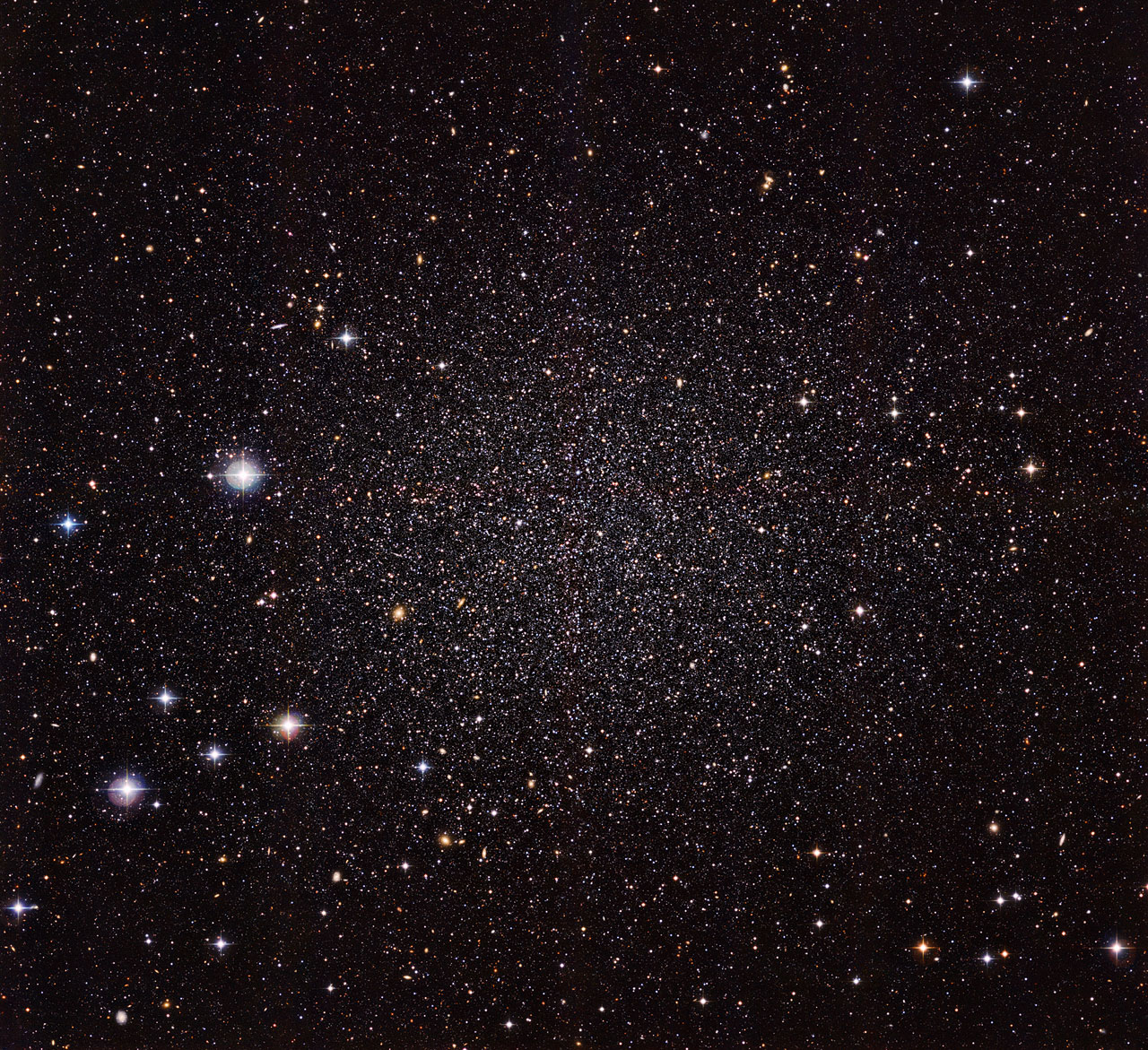Shy neighboring galaxy revealed in new close-up
New images of the Sculptor dwarf galaxy bring lessons about the Milky Way
Sandy Ong • December 1, 2015
Astronomers just released a breathtaking new image of the Sculptor Dwarf Galaxy, one of the Milky Way’s closest neighbors. Captured at the La Silla Observatory in Chile on Sept. 16, the high-resolution photo shows the spheroidal galaxy’s millions of stars more clearly than ever before.
Now researchers are studying the image to gain a deeper insight into the origins of the Universe, our Milky Way and even dark matter.
“It’s particularly difficult to capture a dwarf galaxy in the beautiful way this image has,” said astronomer Eline Tolstoy from the University of Groningen in the Netherlands. Because dwarf galaxies are small and contain relatively few stars, they can appear faint from Earth, she explained.
Since its discovery in 1937, the Sculptor Dwarf Galaxy has remained a mystery because quality images of the mini-galaxy are scarce. This release by the European Southern Observatory comes at a time when astronomers are discovering dwarf galaxies at a remarkable rate — more than 20 possible dwarf galaxies have been spotted around the Milky Way in the past year alone.
This stunning new close-up of Sculptor Dwarf shows its millions of stars in unprecedented detail. It orbits the Milky Way galaxy, which contains an estimated 100 to 400 billion stars, including our sun. A closer look at the image reveals two star populations: bright blue stars clustered near the middle and dimmer red ones farther away. Astronomers can determine how old star clusters are based on their color – younger ones are hotter and appear blue, while older ones that have cooled down look red.
Overall the dwarf galaxy is approximately 10,000 times fainter than the Milky Way. That’s like the difference between a single incandescent bulb on a string of Christmas tree lights and all of the stadium lights at a football game. Sculptor’s dimness is precisely why astronomers didn’t find it for more than two centuries after they discovered the more distant but much brighter Andromeda galaxy, despite it being in our intergalactic backyard. At 280,000 light-years away, Sculptor is nearly 10 times closer to Earth than Andromeda, which is 2.5 million light-years away. Sculptor was the third dwarf galaxy discovered to be orbiting around our Milky Way; prehistoric astronomers spotted two of its more vibrant and visible neighbors, the Large and Small Magellanic Clouds, thousands of years ago.
You can observe the Sculptor Dwarf Galaxy from the Southern Hemisphere with the aid of a telescope — in contrast, Andromeda is bright enough to see with the naked eye. Its name is two-fold, reflecting both its relatively small size and the Sculptor constellation in which it resides. Sculptor is a modern constellation, so it isn’t associated with any mythology, unlike the classical constellations described by the Greeks. Instead, it was named “l’Atelier du Sculpteur,” or “The Sculptor’s Studio,” by the French astronomer Nicolas Louis de Lacaille, who first charted it in 1752.
Astronomers study the Sculptor Dwarf Galaxy because of how ancient it is. “The two star populations in Sculptor are very old — 12 and 10 billion years old respectively,” said European Southern Observatory astronomer Michael Hilker.
“The earliest times for Sculptor were the earliest times for the Universe,” said Tolstoy. Although the Milky Way is slightly older at approximately 13.2 billion years old, it’s hard to use it as model to learn how stars formed in the early Universe “as we sit in the middle of it,” unable to see the full view, said Tolstoy. But Sculptor is far enough away to give us a good perspective, she adds.
The dwarf aspect of Sculptor also provides tantalizing clues about our own galaxy. “Dwarf galaxies like Sculptor are considered the building blocks of larger galaxies like the Milky Way,” said Tolstoy. “Understanding the smaller pieces should also help us understand the bigger systems.”
Astronomers believe that larger galaxies like our Milky Way continue to grow and form new stars using their strong gravitational fields to suck in smaller, neighboring galaxies. “It’s kind of a violent universe we live in,” said astronomer Evan Kirby of the California Institute of Technology. “Larger galaxies constantly acquire new mass by cannibalizing dwarf galaxies.”
Sculptor and its fellow dwarf galaxies may help scientists understand more about dark matter — one of science’s greatest mysteries. Dark matter comprises approximately 27 percent of the universe and is completely invisible. The only way to study it is by observing how it interacts with ordinary matter. Because gravity from dark matter affects the movements of stars, astronomers can measure the velocities of Sculptor’s stars to indirectly look at how dark matter works.
“Galaxies that are small tend to contain a large amount of dark matter,” said astronomer Thomas de Boer of the University of Cambridge in England. Sculptor contains 15 to 20 times more dark matter than it does visible matter — mostly stars — so it’s a good way to study this elusive material, said Kirby.
Sculptor enthusiasts like de Boer expect to see more images of the Sculptor Dwarf Galaxy in even higher resolution soon, thanks to improvements in camera and telescope technology. “Astronomy is definitely technology-driven,” said de Boer. “New instrumentation will allow us to probe ever deeper into Sculptor, unlocking more of its secrets.”
